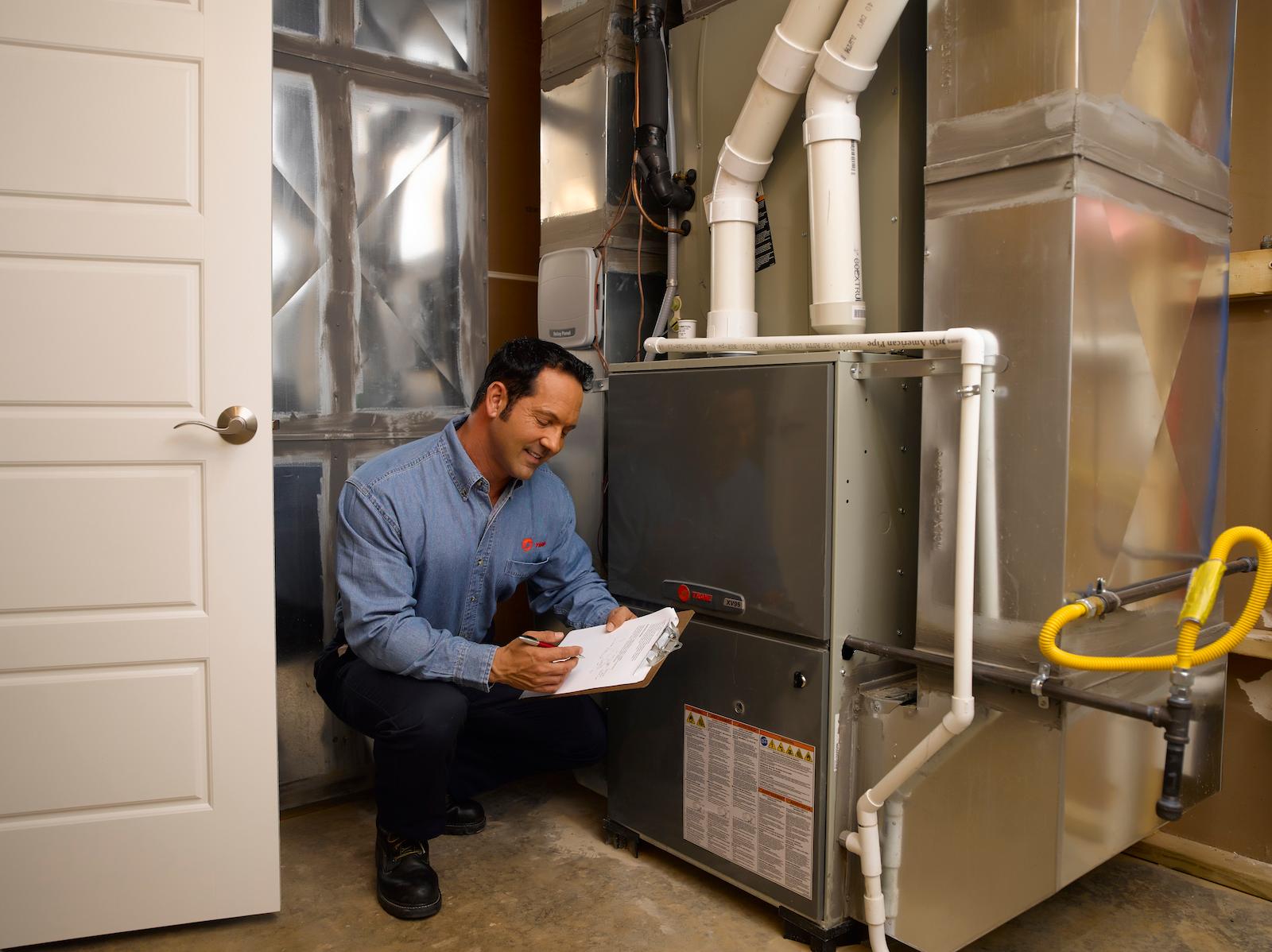Winterization: Winter is Coming, Is Your Furnace Ready?
As snow has already started to fall in some parts of the country, there’s no denying that winter is just around the corner for all of us. With winter fast approaching, it’s crucial to ensure your furnace is prepared to keep your home warm and cozy this season.
Be sure your furnace is ready to withstand the demands of a cold winter.
To fully prepare for this winter, explore the importance of winterizing your furnace and address common issues like a furnace not kicking on for heat and the necessity of insulation on refrigerant lines. Be fully prepared by knowing the new furnace installation cost and furnace maintenance costs, underlining the significance of having your heating system properly maintained before the cold weather sets in.
The Chilling Reality: Winter is Coming
Winter, with its frosty mornings and snowy landscapes, can be a beautiful time of year. However, it also brings a drop in temperature that can leave us shivering indoors without proper heating. Your furnace, the unsung hero of winter, plays a vital role in keeping your home warm and comfortable. To ensure that your furnace functions efficiently throughout the season, it's crucial to give it some TLC before the chill sets in.
The Common Dilemma: Furnace Not Kicking On for Heat
One of the most frustrating scenarios during winter is when your furnace refuses to kick on, leaving you in the cold. This situation can occur for various reasons, and diagnosing the issue requires basic troubleshooting.
Possible Causes of a Furnace Not Kicking On for Heat
Thermostat Malfunction
Sometimes, the problem is not with the furnace itself but with the thermostat. If your thermostat is unresponsive or has a dead battery, it won't signal your furnace to start.
Clogged Air Filters
Clogged or dirty air filters can restrict airflow, causing your furnace to overheat and shut down as a safety precaution. Regularly changing or cleaning your air filters is essential for smooth furnace operation.
Pilot Light Issues
If you have an older gas furnace, the pilot light may be the culprit. A pilot light that's gone out or a faulty thermocouple can prevent your furnace from starting.
Ignition Problems
Furnaces equipped with electronic ignition systems may experience issues with the igniter. A malfunctioning igniter won't light the burner, leaving you without heat.
Safety Switches
Most modern furnaces have safety switches that trigger a shutdown if a safety hazard is detected. Any issues, such as a blocked vent or flue, can activate these switches.
To prevent a furnace not kicking on for heat, it's a good practice to schedule annual furnace maintenance with a professional technician. They can inspect, clean, and address potential issues, ensuring your furnace is winter-ready.
Protecting Against the Chill: Insulation on Refrigerant Lines
While the furnace itself is essential for heating your home, the supporting components also play a significant role in ensuring its efficiency. One often overlooked aspect is the insulation on refrigerant lines.
What Are Refrigerant Lines, and Why Do They Need Insulation?
Refrigerant lines are part of your HVAC system and play a crucial role in the cooling process during the summer. They carry refrigerant, which absorbs heat inside your home and releases it outside. During the winter, these same lines can become cold, making them prone to condensation. This condensation can freeze, leading to various problems.
Here's why insulation on refrigerant lines is essential:
Preventing Freezing
Insulation acts as a protective barrier, preventing the refrigerant lines from freezing during the winter months. Frozen lines can disrupt your HVAC system's operation.
Energy Efficiency
Properly insulated lines help maintain the temperature of the refrigerant, making your HVAC system more energy-efficient. This can result in lower energy bills and reduced strain on your furnace.
Extended Lifespan
Insulation not only prevents freezing but also protects the lines from external elements and physical damage. This extends the lifespan of your HVAC system.
Consistent Comfort
Insulated lines ensure your HVAC system operates smoothly, maintaining consistent comfort levels in your home throughout the year.
To ensure your refrigerant lines are adequately insulated, consider having a professional HVAC technician assess your system. They can identify any insulation issues and make the necessary improvements.
A Fresh Start: New Furnace Installation Cost
In some cases, maintaining your existing furnace may not be the most cost-effective or efficient solution. If your furnace is old, unreliable, or inefficient, it may be time to consider a new furnace installation. The cost of a new furnace installation can vary widely depending on several factors.
Factors Affecting New Furnace Installation Cost
Furnace Type
The type of furnace you choose, such as gas, electric, or oil, significantly impacts the installation cost. Gas furnaces are often more affordable to install and operate.
Size and Capacity
The size of your home and your heating needs will determine the furnace's size and capacity. A larger furnace for a bigger home will cost more to install.
Efficiency Rating
Furnaces with higher efficiency ratings are generally more expensive but can lead to long-term energy savings. Consider the long-term benefits when assessing the cost.
Ductwork and Venting
If your existing ductwork and venting systems are incompatible with the new furnace, modifications or replacements may be necessary, adding to the installation cost.
Location and Labor Costs
Labor costs can vary by location. Factors like local labor rates and accessibility can influence the overall installation cost.
It's essential to work with a qualified HVAC contractor who can provide an accurate estimate tailored to your specific needs. Investing in a new furnace can improve your home's comfort, energy efficiency, and reliability.
Safeguarding Your Investment: Furnace Maintenance Cost
Regular furnace maintenance is key to ensuring the longevity and efficiency of your heating system. While it's an additional expense, the furnace maintenance cost is a wise investment that pays off in several ways.
The Benefits of Regular Furnace Maintenance
Enhanced Efficiency
A well-maintained furnace operates more efficiently, reducing your energy consumption and lowering your heating bills.
Prolonged Lifespan
Routine maintenance can extend the lifespan of your furnace, delaying the need for a costly replacement.
Reduced Repairs
Preventative maintenance helps identify and address minor issues before they escalate into expensive repairs.
Optimal Performance
A well-maintained furnace provides consistent and reliable heating, ensuring your home remains comfortable throughout the winter.
Safety Assurance
Regular inspections can detect any safety concerns, such as carbon monoxide leaks, ensuring the well-being of your household.
While the furnace maintenance cost is a recurring expense, it's far more economical than dealing with emergency repairs or premature replacements.
Contact Your Local Trane Comfort Specialist
As winter approaches, ensuring your furnace is ready for the cold months ahead is crucial to staying comfortable. A furnace not kicking on for heat can quickly turn a cozy home into an uncomfortable one. Likewise, overlooking insulation on refrigerant lines can lead to efficiency and performance issues. While the new furnace installation cost may seem daunting, it's an investment in your home's comfort and energy efficiency. Regular furnace maintenance is the key to safeguarding your investment and keeping your heating system in optimal condition.
Don't wait until the first frost to address your furnace-related concerns. Reach out to a professional HVAC technician for thorough inspection and maintenance. With a winter-ready furnace, you can enjoy the season without worrying about the cold creeping in. Winter is coming, and your furnace should be ready to face it head-on.




